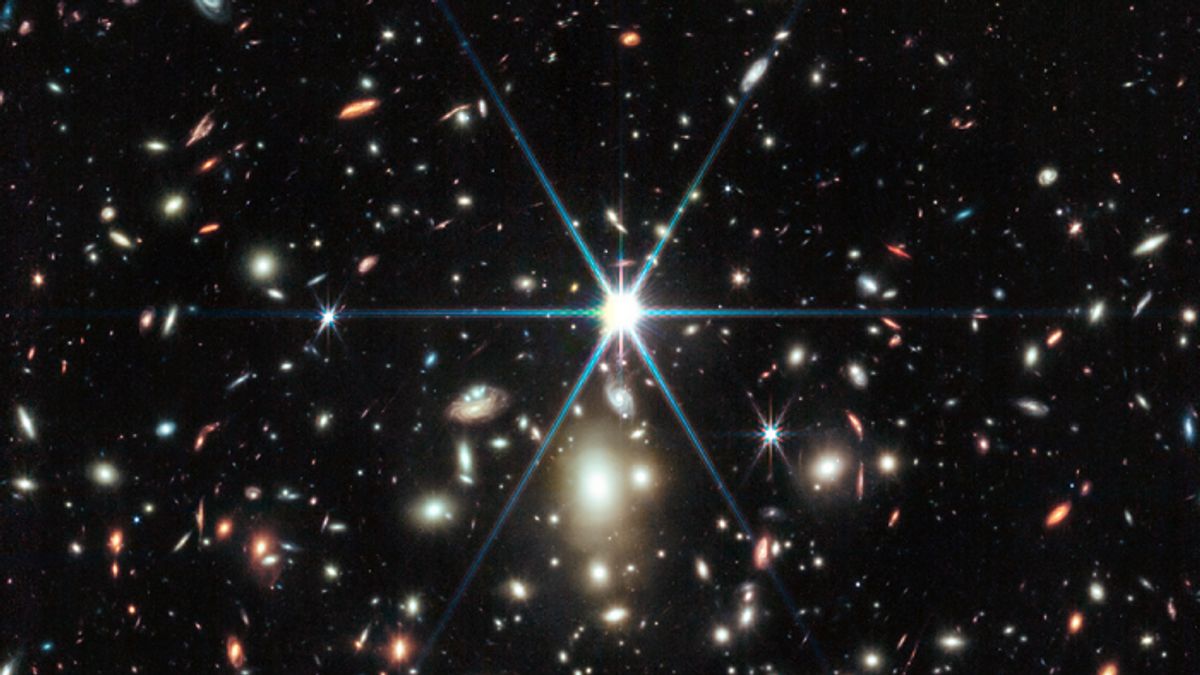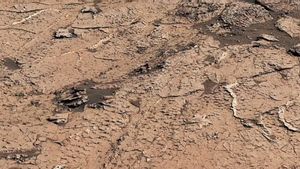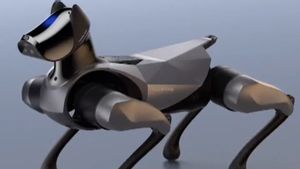JAKARTA - NASA's James Webb Space Telescope has identified a giant star twice as hot as the Sun, and about one million times brighter.
Thanks to the NIRCam (near-Infrared Camera) instrument, the Webb Telescope revealed the star was a massive B-type star dubbed Earendel.
The discovery of the Webb Telescope based on a follow-up to observations by the Hubble Space Telescope, the star, located in the Sunrise Arc galaxy, is the highest-magnification galaxy ever detected in the first billion years of the universe.
Earndel can only be detected due to the combined strength of human and natural technology through an effect called gravitational lensing.
Both the Webb Telescope and Hubble can detect Earendel because of its lucky alignment behind wrinkles in spacetime, created by massive galaxy cluster WHL0137-08.
The galaxy cluster, located between Earth and Earendel, is so massive that it bends the spaceline itself, resulting in a magnification effect. The researchers can see through a clump like a magnified glass.
SEE ALSO:
They then, determined that the object was enlarged by a factor of at least 4,000 and thus very small, making it the furthest star ever detected, observed 1 billion years after the Big Bang.
Stars as big as Earendel often have companions. Researchers did not expect the Webb Telescope to reveal any Earendel counterparts because they would be very close and indistinguishable in the sky.
However, based solely on the Earendel color, the researchers thought they saw signs of cooler and red companion stars. This light has been stretched by the expansion of the universe to wavelengths rather than the Hubble Telescope instrument can detect, so it can only be detected with the Webb Telescope.
NIRCam The Webb Telescope also shows other important details on Sunrise Arc. Its features include young star forming areas and older star clusters measuring as small as 10 light years.
On either side of the maximum enlargement wrinkles passing through Earendel, this feature is reflected by the distortion of gravitational lensing. The star forming region appears to be elongated, and is estimated to be less than 5 million years old.
Smaller spots on both sides of Earendel are two images of an older and more established star cluster, estimated at least 10 million years old.
The researchers determined the star cluster was gravitationally bound and is likely to last until today. Now, they analyze the data from observations of the NIRSpec (near-Infrared Spectrograph) instrument belonging to the Webb Telescope of the Sunrise Arc and Earendel galaxies, which will provide precise composition and distance measurements for the galaxy.
Since the discovery of Earendel by the Hubble Telescope, the Webb Telescope has detected other very distant stars using the technique, although not as far as Earendel, as quoted from NASA's website, Monday, August 21.
The discovery has opened up a new realm of the universe for the physics of stars, and new subject matter for scientists studying the early universe, where once galaxies were the smallest detectable cosmic objects.
Mereka, para peneliti memiliki harapan yang hati-hati bahwa ini bisa menjadi langkah menuju deteksi salah satu bintang generasi pertama, yang hanya terdiri dari bahan raw universe dan dicipta dalam Big Bang yaitu hydrogen dan helium.
The English, Chinese, Japanese, Arabic, and French versions are automatically generated by the AI. So there may still be inaccuracies in translating, please always see Indonesian as our main language. (system supported by DigitalSiber.id)

















